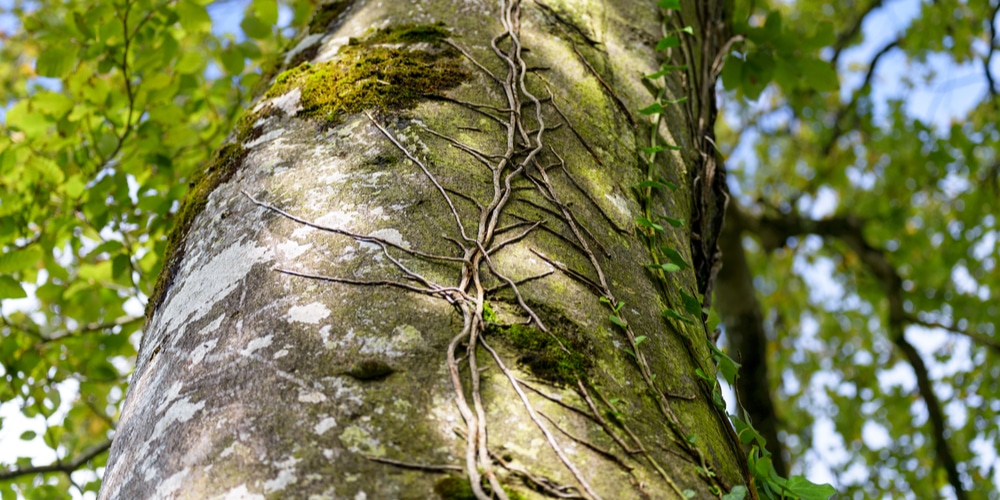We see vines climbing up trees all the time in the wild, and it’s safe to assume that the tree will be perfectly fine. But will it?
Do vines kill trees? What can you do if your tree is covered with them?
Are Vines Bad for Trees?

Climbing vines on trees seems normal to a lot of people, but the truth is that the vines will eventually kill the tree in a number of ways.
Vines can kill trees, albeit slowly and over time. The process is faster if the vining plant is a fast-growing species. Aside from the vine’s leaves blocking out sunlight, its roots tend to attach themselves to the tree trunk and introduce a host of problems such as excessive moisture, pests, and diseases.
Vines can become heavy and add weight, eventually causing branch and limb breakage. They’re considered parasites that compete with their tree hosts for water and nutrients. It’s also believed that some vines perform an action called girdling, which removes a layer of bark around a tree and causes it to die because nutrients will no longer reach the leaves.
5 Tips on How to Get Rid of Vines on Trees
Do Not Pull the Vines Off the Tree
It’s generally not a good idea to pull the vines off the tree. Although it may seem very tempting, tugging on the unwanted vine will cause the bark to peel away as well, leading to tree damage.
You should always assume that the vine is firmly attached to the tree trunks by the aerial roots. If you want to kill vines on trees then you should plan first before doing any pulling or cutting.
For young and thin vines, you can try to tug gently and see if they will come apart. Only do this once or twice before trying another vine removal technique.
Cut Off the Main Body From the Roots
One of the best ways to remove vines on trees is to cut them off at the source. Remember, these plants started on the ground, and this is where you’ll want to hit them.
Using a pair of garden shears or loppers, cut away at the vines that are about a foot from the ground. This should sever the vines’ main connection to the roots where they’re getting the nutrients from, and slowly wither away and die. With this process, removing vines encircling the tree becomes less difficult as the clinging roots will also have died by then.
Divide and Conquer
After cutting off the main stems from the ground, focus your attention on the stems on the tree trunk. Using the same garden shears, cut at the vine every foot or so up to the top. It’s okay if you can’t reach all of them- just go as high as you can and safely.
After several weeks up to a month, the vine should have died and is now decaying or starting to untangle. From there, you’ll be able to remove it by hand or using a rope.
Spray with Systemic Herbicide
If you’re keen on using chemicals such as a systemic herbicide to kill vines on a tree, then you can go ahead and do so. However, you will want to wait until the wind dies down or in the latter part of the day when it isn’t so hot.
Choose the right herbicide that can kill the vine that’s on your tree. Follow the manufacturer’s instructions and make sure to wear protective clothing, as well as gloves and goggles to prevent the spray from getting to your eyes or skin.
Direct the spray to the vines’ leaves, as well as the roots at the base of the tree. You can reapply after two to three days or until the vine has died and its hold on your tree has relaxed.
Stay Vigilant
Vines are easier to deal with when they’re still young, thin and when your tree isn’t crowded with them.
Inspect your landscape regularly for any unwanted plants, grass, or vine and remove them by hand or with a garden tool. It’s also recommended that you clean up debris and dead plant matter to discourage any stray plants from growing. Adding an inch or two of mulch can discourage vine growth as well.
